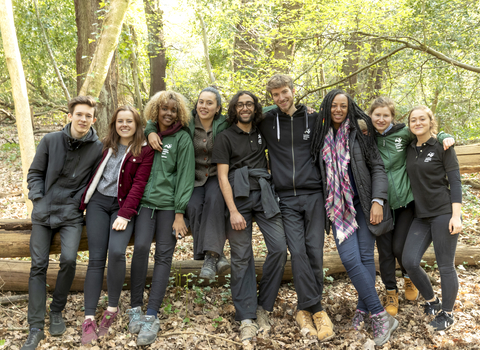“Thousands of tired, nerve-shaken, over-civilised people are beginning to find out that going to the mountains is going home”
John Muir, 1901
The concept of engaging with nature and wild places having a positive effect on human health is not an unfamiliar one. When public greenspaces were officially designated in the UK during the 19th century, the potential public health benefits were cited as a reason for doing so. Many of us can relate to a feeling of calm and escape from the routine of daily life when we visit nature reserves. However only recently are these observations being converted into rigorous scientific facts. In 2017 Essex University collaborated with The Wildlife Trusts to publish The Health and Wellbeing Impacts of Volunteering with The Wildlife Trusts which found that 95% of volunteers with low wellbeing reported an improvement in six weeks. Due to the growing demand for mental health care services, the evidence for nature-based interventions continues to grow.
The pursuit of wellbeing through a connection with nature can be seen in the history of many different cultures throughout the world. The Victorians for example were particularly fond of the “healing waters” which flowed from woodland springs, Spa Wood (part of The Great North Wood) in south London takes its name from this practice. I’m not able to confirm or deny the powers of said water, but I bet that the Victorians that lounged at Spa Wood felt genuinely revitalised when they returned home.
The predominant religion in Japan, Shintoism, is rooted in the worship of nature so it is perhaps unsurprising that the nation’s culture has embraced the natural world and the healing powers it might yield. Often lauded for being ahead of the curve, Japan has been quietly leading the way in a more modern, evidenced based approach to nature therapy. Rather than ancient religion or superstition Shinrin-Yoku or “forest bathing” is a product of scientific research. The term was coined by government officials at the Forest Agency of Japan in the 1980s, their goal was to promote healthier lifestyles by encouraging people to take regular walks in specially designated green spaces. The policy was backed up by government commissioned studies that claimed a boost in the immune system, reduced stress hormones and improved mental wellbeing.
Today, the practice of Shinrin-Yoku is established all over the world and combines elements of meditation, mindfulness and aromatherapy (Japanese tree oils have become big business since recent studies have claimed that oils produced by the Kumano Kodo Cedar tree can counter the symptoms of Alzheimer’s). Shinrin-Yoku is accessible to almost everyone and can be practiced alone or in a group in any green space. From my own experience, the wilder the better! Many London Wildlife Trust reserves provide the perfect opportunity. Importantly, there are no strict rules and your practice can take any form that works for you, if you’re interested in trying it out for yourself here’s my advice to getting started:
1. Leave your phone at home
One of the key difference between “forest bathing” and an everyday walk in the woods is to cultivate a more immersive experience, this means minimising potential distractions. Similarly, if practicing as part of a group you should agree a period of silence while you walk. Of course, it is important that you feel safe and comfortable while you practice so feel free to bring your phone with you but keep it switched off!

